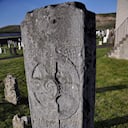Where was daylight savings time first used?
Daylight savings time (DST) is used to save energy and make better use of daylight. Clocks are set to ensure that typical waking and work hours have greater sunlight, thus less need for artificial lighting. DST is a seasonal time change measure where clocks are set ahead of standard time during part of the year, usually by 1 hour. As DST starts, the sun rises and sets later on the clock than the day before. Daylight savings was first proposed by a New Zealand scientist in 1895, first used in Canada in 1908, and popularized by Germany in 1916.
In 1895, New Zealand scientist George Vernon Hudson presented a paper to the Wellington Philosophical Society, proposing a two hour shift forward in October and a two hour shift back in March.
On July 1, 1908, the residents of Port Arthur, Ontario, now known as Thunder Bay, in Canada, turned their clocks forward by 1 hour to start the world's first DST period.
Germany introduced DST in 1916. Clocks in the German Empire, and its ally Austria, were turned ahead by 1 hour on April 30, 1916. The rationale was to minimize the use of artificial lighting to save fuel for the war effort. Many European countries adopted DST for the duration of WWI, and again during WWII.
Today, over 70 countries have adopted DST. In the United States, each state determines whether they will adopt DST.
More Info:
www.timeanddate.com







